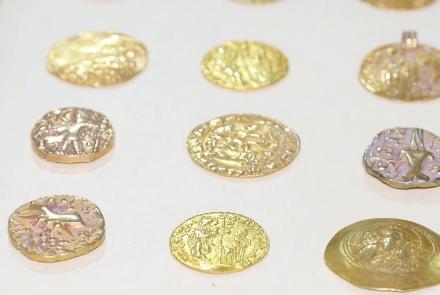Coinciding with International Museum Day on Tuesday, the National Museum exhibited 1,200 pieces for one day in Kabul. These artifacts had been seized by security forces from various parts of the country.
Gold coins were included from various historical eras, including the Achaemenid period, Western Greece, and the Safaweyan, Ghaznavian, Seljukian, Abbasian, Byzantium, Sassanian, and Kushanian periods. The back and front sides of these coins are stamped with symbols of kings, crowns, goddesses and other images.
According to the head of the National Museum, in addition to the ancient relics that were smuggled during the past wars, archeological sites are still being looted in insecure areas of the country.
“People are looking for antiquities as a treasure and a good source of income; they are trying to find them and make money,” said Fahim Rahimi, director of Afghanistan’s National Museum.
The exhibition included 1192 silver coins believed to be from the Ghaznavian era, which were seized around Helmand province’s Qalai Bost castle and transferred to the National Museum.
On one side of the coins there are verses of the Holy Quran, while the other side there are symbols from the Hindu Shahi era.
Tahir Zuhair, acting minister of information and culture said: “Diggings, excavations, and efforts that have been carried-out in the last 20 years led to the discovery of 25,000 historical artifacts from different provinces of Afghanistan, and all of them have been registered.”
Among the relics displayed, there are some types of traditional weapons as well.
Pieces of a Buddha statue were also exhibited that had previously been seized by security forces before being smuggled into Bagram.
Archeologist Abdul Hafiz Latifi said: "During the years of war and social and political unrest in this ancient land, archeological sites have always been looted. These sites were invaded either by the groups involved in the fighting or by profit-seekers who took advantage of war situations."
During recent decades of war, nearly 100,000 antiquities at the National Museum were stolen and only 20% have been recovered over the last 20 years.



Comment this post